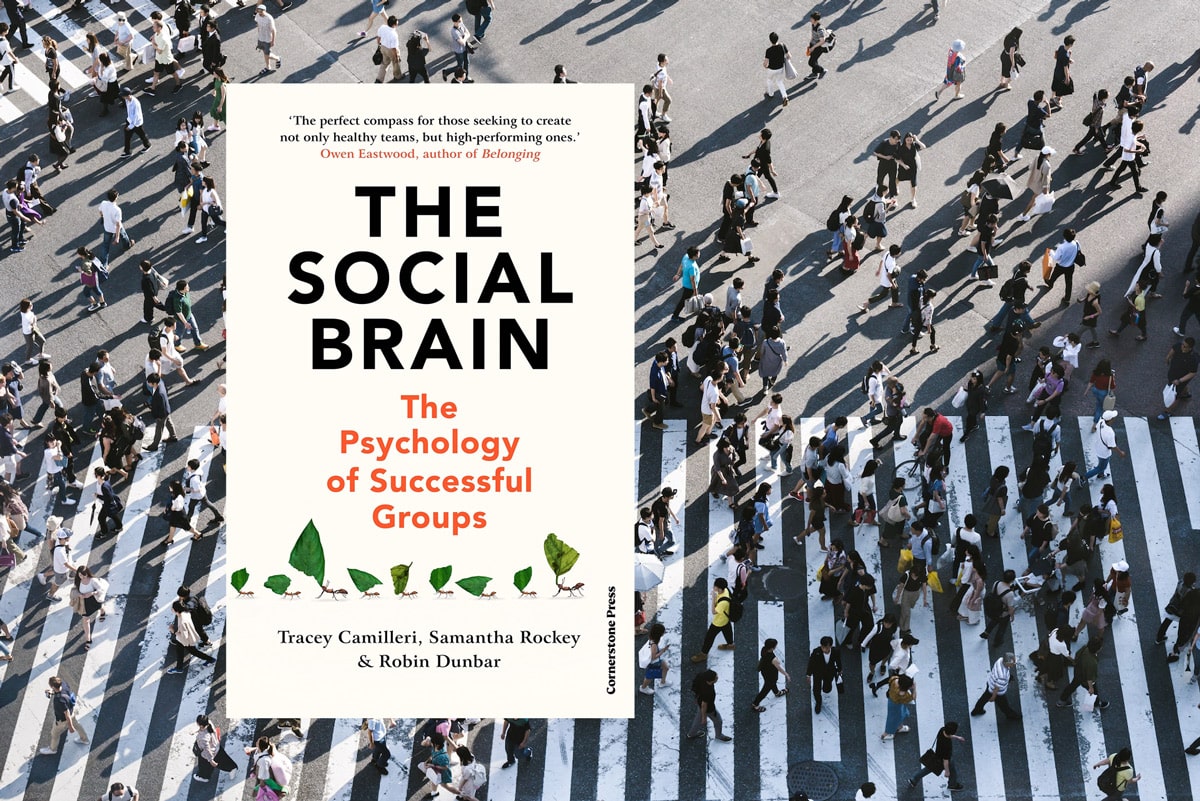 Terry Kemple is a retired GP living in Bristol and has various roles promoting greater sustainability in general practice. He is a past President of the Royal College of General Practitioners. He is on Twitter: @TKemple
Terry Kemple is a retired GP living in Bristol and has various roles promoting greater sustainability in general practice. He is a past President of the Royal College of General Practitioners. He is on Twitter: @TKemple
Questioning old ways of structuring your work and abandoning useless habits sounds good, but do you really need to read another book about leadership and teams?
The Social Brain: The Psychology of Successful Groups revives ancient ways of working together, backed by insights about the biological limits of our social brains. Working in large NHS organisations, full of inefficiencies, with ill thought-out contracts and poorly articulated labour relations, sours our trust and goodwill. Knowing how our brains work best may improve how we lead and organise teams. It could feel like the difference between swimming with the current rather than against it.
This work is a collaboration between three people with different backgrounds: Tracey Camilleri is from the University of Oxford Said Business school; Samantha Rockey from a career in a global corporation; and Robin Dunbar is Professor of Evolutionary Psychology at the University of Oxford. Dunbar is the originator of the social brain hypothesis about the number of relationships that we can manage.
“If you think everything is going well in your organisation it probably means you have not been paying enough attention.”
The hypothesis is that a species’ brain size and available time limits the size of that species’ social groups. For humans, the maximum natural level is 150 people. This is the Dunbar number and may be the evolutionary limit of meaningful social relationships that an individual can manage at any one time.
The Dunbar graph goes further and layers our relationships by their size and function, from our intimates (1 or 2), close friends (5), best friends (15), good friends and our main social circle (50), just friends (150), acquaintances (550), faces we can put names to (1500), and individuals we recognise but can’t put names to (5000).
There is a rough rule of three — each layer is three times the size of the one within it. These are linked with the size of groups in our evolutionary history and are echoed in organisations like the military and many successful businesses.
The authors’ experiences from the University of Oxford Said Business school and corporate world help to give cited examples and practical advice for the best ways of working to create a sense of tribal belonging. When we meet someone for the first time it is usual to try to find a connection with them. Our initial trust of others and friendship seem to relate to how much we share seven core dimensions: language, growing up in the same location, educational and career experiences, hobbies and interests, worldview, sense of humour, and musical tastes. These make it easier to engage socially and maintain our relationships.
“Identifying and managing the free riders in your groups who exploit others’ goodwill and trust is essential … ”
Understanding the limits of our ‘mentalising’ powers, our difficulty coping successfully with larger conversation groups, our gender differences in conversational style, the non-verbal signals around us, and the emotional connection of story-telling are all considered. Different tasks demand different group sizes. Coping with and improving new ways of team working after the pandemic with hybrid working and online meetings are also reviewed.
If you think everything is going well in your organisation it probably means you have not been paying enough attention. There is a biological basis for the organisational challenges (for example, silos, internal rivalries, and dysfunctional group dynamics) that are always likely to occur. It is not all about getting good people to work together better. Identifying and managing the free riders in your groups who exploit others’ goodwill and trust is essential; in particular, those who display ‘dark triad’ traits (such as narcissism, Machiavellianism, or psychopathy) so they can be dealt with quickly before they harm your organisation.
The final chapter, ‘Afterword’, offers advice on the first steps to take towards greater thriving at work, and includes: leading by numbers (for example, what is the best size of group for the task?), promoting a sense of belonging, building better bonding, matching the medium to the message, providing social space and social time, and the size and strength of trust.
Most of the advice in the book is based on experience and research and seems like common sense, but organisations often consider it as ‘nice to have’ rather than ‘essential to do’.
The message is about how we are limited by the social firmware in our brains. The most important factor in making people happy in their work is a sense of belonging. People will flourish more when they know others, and others know them. However, the quality of relationships decreases as the size of the group increases. The best way to grow large may be to stay small.
Featured book: Tracey Camilleri, Samantha Rockey, Robin Dunbar, The Social Brain: The Psychology of Successful Groups, Cornerstone Press, 2022, HB, 272pp, £16.69, 978-1847943606.
Featured photo by Ryoji Iwata on Unsplash.






